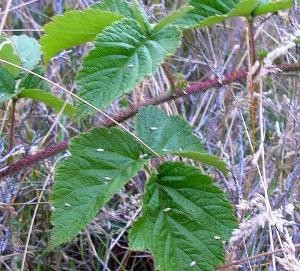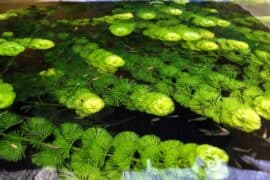ʻĀkalakala
(Rubus macraei)

Description
Rubus macraei, commonly known as Macrae's raspberry, is a remarkable species of raspberry native to the Pacific Northwest region of North America. This perennial plant belongs to the Rosaceae family and is highly esteemed by both plant enthusiasts and horticulturists for its unique characteristics and ecological importance. In this article, we will explore the taxonomy, morphology, habitat, cultivation, and cultural significance of Rubus macraei. Taxonomy Rubus macraei was first described by American botanist Leslie Hubricht in 1941. The species was named in honor of the Scottish-born botanist and explorer, William H. Macrae, who extensively studied the flora of the Pacific Northwest. Rubus is a large genus of flowering plants in the Rosaceae family, commonly referred to as brambles or raspberries. Morphology Rubus macraei, commonly known as Macrae's raspberry, is a deciduous shrub with distinct physical characteristics. Here is a detailed description of its appearance: Stem: The stems of Rubus macraei are erect, meaning they grow vertically. They are biennial, meaning they live for two years, and armed with sharp thorns. These thorns, which are modified branches, serve multiple purposes, including climbing support and defense against browsing animals. Leaves: The leaves of Macrae's raspberry are compound and alternate, arranged along the stems in an alternating pattern. Each leaf is composed of three leaflets. The leaflets are generally elliptic or ovate in shape, with serrated or toothed margins. They have a dark green coloration, which adds to the plant's aesthetic appeal. Flowers: Rubus macraei produces attractive flowers that are small but visually appealing. The flowers are typically white to pale pink in color and have a diameter of approximately 1 to 2 centimeters (0.4 to 0.8 inches). They are borne in small clusters at the ends of the branches, adding a delicate and charming touch to the plant's overall appearance. These flowers serve as a vital component of the reproductive cycle of Rubus macraei. Fruit: The fruits of Rubus macraei are drupes, which are aggregate fruits made up of numerous small fleshy segments called drupelets. These drupelets are arranged in a circular manner around a central core. When fully mature, the fruits exhibit a deep red to purplish color, and their appearance is reminiscent of other raspberries. The fruit clusters are plump and juicy, making them visually enticing and inviting for consumption. Overall, Rubus macraei presents a pleasing and attractive appearance with its erect stems, compound leaves, delicate flowers, and luscious fruit clusters. Its physical attributes make it a visually appealing plant, whether found in its natural habitat or cultivated in gardens and landscapes. Habitat and Distribution Rubus macraei, commonly known as Macrae's raspberry, is native to the Pacific Northwest region of North America. Its habitat and range are primarily focused on the coastal areas of the United States and Canada. Here is a detailed overview of its habitat and range: Habitat: Rubus macraei is a versatile plant that can adapt to various habitats within its native range. It is commonly found in forests, woodlands, meadows, and disturbed areas. The species tends to thrive in open spaces where it can receive ample sunlight, but it can also tolerate partially shaded environments. Macrae's raspberry shows a preference for well-drained soils, including sandy, loamy, and rocky substrates. It is commonly observed in areas with moderate moisture levels, although it can withstand periodic drought conditions. Range: Rubus macraei is predominantly distributed along the coastal regions of the Pacific Northwest. Its range encompasses parts of the United States and Canada. Specifically, Macrae's raspberry can be found in the following regions: United States: The species is native to the states of Oregon, Washington, and northern California. It occurs along the coastline and extends inland to certain areas within these states. Rubus macraei can be found in both the coastal lowlands and the lower elevation mountainous regions. Canada: Within Canada, Macrae's raspberry is found in the southwestern region of British Columbia. It occurs in coastal areas, including Vancouver Island, the Gulf Islands, and adjacent mainland regions. While the primary range of Rubus macraei is concentrated in the Pacific Northwest, it is important to note that specific occurrences of the species may vary within this range. Factors such as local climate, soil conditions, and habitat availability contribute to the distribution patterns of Macrae's raspberry within its native range. Rubus macraei's habitat and range highlight its adaptability to coastal environments and its ability to thrive in diverse ecological settings. These characteristics have contributed to the species' ecological significance and its popularity among horticulturists and plant enthusiasts. Cultivation The cultivation of Rubus macraei has gained popularity among horticulturists and home gardeners due to its unique characteristics and adaptability. If you wish to grow Macrae's raspberry, here are some important considerations: Climate: Macrae's raspberry thrives in temperate climates with cool summers and mild winters, similar to its native habitat. It is best suited for USDA hardiness zones 7 to 9. Sunlight: This species prefers full sun to partial shade. Ensure that the chosen planting location receives at least 6 hours of direct sunlight per day. Soil: Rubus macraei prefers well-drained soils with a loose texture. It can tolerate a range of soil pH levels, but slightly acidic to neutral soils (pH 6.0 to 7.0) are generally ideal. Adequate soil preparation with organic matter such as compost or well-rotted manure can improve the soil structure and fertility. Planting: When planting Rubus macraei, dig a hole slightly larger than the root ball of the plant. Place the plant in the hole, ensuring that the crown is level with or slightly above the soil surface. Backfill the hole with soil, gently firming it around the roots. Water the plant thoroughly after planting. Watering: Macrae's raspberry requires regular watering to establish and maintain healthy growth. Keep the soil evenly moist but avoid overwatering, as excessive moisture can lead to root rot. Mulching around the base of the plant can help retain soil moisture and suppress weed growth. Pruning: Pruning is an essential aspect of managing Rubus macraei. It is recommended to prune the plant in late winter or early spring before new growth emerges. Remove any dead, damaged, or diseased canes, as well as weak or overcrowded growth. Pruning can also help maintain the plant's shape, promote better airflow, and increase fruit production. Fertilization: While Macrae's raspberry can grow well in moderately fertile soils, occasional fertilization can enhance its growth and fruiting. Apply a balanced, slow-release fertilizer in early spring, following the manufacturer's instructions. Organic fertilizers, such as compost or well-rotted manure, can also be used to provide nutrients to the plant. Pest and Disease Management: Rubus macraei is generally resistant to many common pests and diseases. However, it may still face challenges from aphids, spider mites, or raspberry crown borer. Regular inspection of the plant and prompt action, such as insecticidal soap or organic insecticides, can help manage pest infestations. Proper air circulation and spacing between plants can reduce the risk of fungal diseases, such as powdery mildew or gray mold. Cultural Significance Beyond its horticultural value, Rubus macraei holds cultural significance in the Pacific Northwest. Indigenous communities in the region have utilized the fruits of Macrae's raspberry for centuries as a traditional food source. The berries were consumed fresh, dried, or used in various culinary preparations, such as jams, jellies, and desserts. The plant itself holds spiritual and medicinal significance within these cultures. Additionally, Rubus macraei is of great interest to botanists and researchers studying plant ecology and biodiversity. Its role in supporting wildlife populations, as well as its interactions with other plant species, contributes to the understanding of ecosystem dynamics and conservation efforts. Conclusion Rubus macraei, or Macrae's raspberry, is a captivating species of raspberry native to the Pacific Northwest. With its elegant flowers, delicious fruits, and ecological significance, this plant has earned a special place in both natural habitats and cultivated gardens. By understanding its taxonomy, morphology, habitat, cultivation, and cultural significance, we can appreciate the unique qualities of Rubus macraei and its contributions to the natural world.
Taxonomic tree:







